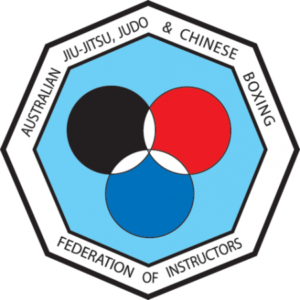Reflective Practice
- Mastering Hidari Throws
Seminar by Sensei Tim Wilkin 2nd Dan
Held at the Box Hill Honbu June 2019
Seminar Synopsis
Do you feel that your hidari throws are not quite as natural as your migi throws? Would you like to improve your hidari throwing techniques by leveraging what you’ve learned for migi techniques? In this seminar we explore both migi and hidari versions of your favourite throws, learn variations in posture, grip and stance that support and improve hidari techniques, and discover embodied reflective practice as a tool for enhancing your learning.
Seminar Review
Review by Ariba Siddiqi 1st Kyu
I attended Sensei Tim’s seminar on ‘Reflective Practice – Mastering Hidari’ with the eagerness to FINALLY learn how to do Hidari throws well. Most of us from 8th Kyu onwards (Orange Level 1) have experienced the awkwardness of doing Hidari throws, as well as the anxiety of doing them well in a grading. My 1st Kyu grading revision was entirely in Hidari throws. Therefore, I was very keen to see what I could learn from Sensei Tim’s seminar that would improve my Hidari Judo throws.
Sensei Tim initially asked us to pick two throws to do Migi and then note down our thoughts on the throw, whether we did it well, or what we could improve. We then moved on to doing the same throws Hidari and similarly noting down our thoughts. Throughout the seminar we continuously paused and reflected on our practice.
I picked first leg throw (A1) which I have always found awkward to do Hidari. My Migi throw was well paced, whereas I found myself slowing down and thinking about body posture and balance to actually execute the throw well. I thought to myself yet again, Hidari throws are perfect to understand how a beginner white belt student feels when they first start learning to do throws.
Speaking of being a beginner, how do you learn something you have never done before? Sensei Tim presented the idea that one way is to draw on a similar experience and build incremental success with learning a new skill. With this concept in mind we practiced doing throws with natural and opposing grips, incrementally introducing changes to something we are familiar with and progressing to the ‘unfamiliar’. We practiced doing Migi throws with Migi grip which is our comfort zone. We practiced Hidari throws with Migi grip, still an awkward thing to do! We then explored Hidari throws with Hidari grip, and finally Migi throws with Hidari grip, something entirely unfamiliar.
If you think about it, doing a Hidari throw with a Hidari grip would be the same as doing a Migi throw with a Migi grip. However, because we don’t usually practice this way, I found myself having to slow down and really think about what makes a Migi throw good, and applying the same principles to the Hidari throw with Hidari grip. This was a similar experience to learning a new or less practiced Migi throw, albeit in a Hidari fashion.
Doing Migi throws with a Hidari grip is akin to doing the typical Hidari throw, but because we are better practiced at doing Migi side throws, it was curious to explore how our Migi throw changes just because of the grip change. Reading through my written reflection; I note that I found it a little more challenging but was able to still execute the throw reasonably well.
At the conclusion of the seminar, Sensei Tim asked our thoughts on how the intentional written reflection between the practices helped us to do Migi or Hidari throws. There was a general consensus within the class that having the opportunity to slow down and think about what we did well, and what we could do better helped improve our Hidari throws. I know I am often guilty of thinking too much about how to do the throws in class, instead of just letting my body do what it knows best, but perhaps the act of transferring my thoughts on paper achieved two things in one go: reflecting on how I could improve a throw I am learning, and ‘emptying my cup’.
My initial thoughts prior to attending the seminar was that I would learn some secret method to doing Hidari throws well. We had started with what we know best, Migi throws, and explored how we can master the unfamiliar by using what we know and adapting it to learn something new. What I took away from the seminar was a tool that I could use to not only mastering Hidari throws, but techniques that I have yet to explore and learn.
